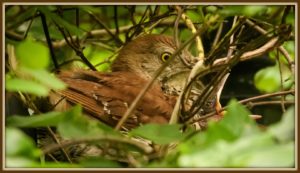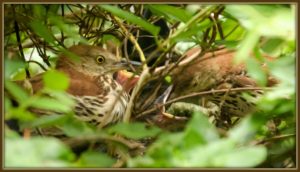Mainly Miniature Monday
Double-click on any image to view it full size. Click the back-button to return to your place on this page.
Greetings!
Last week’s essay considered objects with literally astronomical dimensions; this week we return to my more usual size subjects, starting with the Dogbane Leaf Beetles (Chrysochus auratus), less than half an inch long, shown in picture #1.
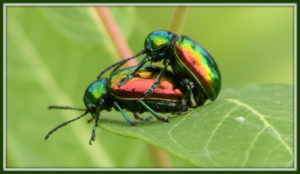
When I saw this couple just a few days ago, they were the first examples of this iridescent beetle I had seen, so I had to look up what they were. In addition to the dogbane plant for which it is named, they feed on milkweed, a leaf of which is seen in this picture. The iridescence is caused by the microscopic structure of its body parts. The colors change depending on the angle of the light falling on it, and the angle it is viewed from.
#2 was also taken within the last few days, as were all the pictures in this set – about the only thing they have in common, other than all being taken within easy walking distance of our condo. It shows a pair of Bluet damselflies (Enallagma species).
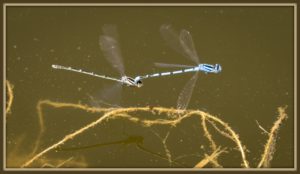
As evidenced by the blurred wings and reflections separated from the insects themselves, they were in flight when I took the picture. Damselfly (and dragonfly) mating behavior is, to us, rather strange. You probably wouldn’t believe me if I tried to explain it, so if you want the details I would suggest checking-out an internet site such as http://www.bigsnestpond.net/critters/feb%20IPS/dragonsex.html !
Picture #3 shows a Brown Thrasher (Toxostoma rufum) carrying food back to its nest.
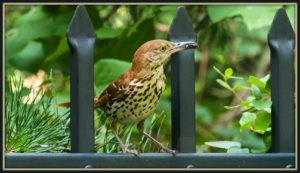
The next two pictures were taken (on the following day) looking into the nest without disturbing the nest or its occupants. In #4 you can see one of the adults with the eye and wide-open beak of one of the nestlings, while in #5 you can see both parents and two wide-open chick beaks!
Brown Thrashers can defend their nests very aggressively. They will “hiss” at you if you get too close, and can attack dogs and people hard enough to draw blood – https://www.allaboutbirds.org/guide/Brown_Thrasher/lifehistory – , so they should be treated with respect!
Another new species added to my list within the last few days is the Checkered White butterfly (Pontia protodice) shown in #6.
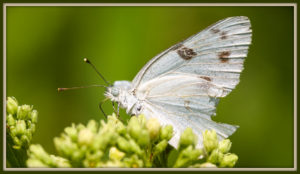
At first sight this butterfly could easily be mistaken for a Cabbage White, but its behavior is different, and on closer inspection the markings are also different. I am happy to see the number of butterflies of many species increasing as the summer moves forward.
Picture #7 can also count as a new “species” in some ways, because it is the first Royal Air Maroc aircraft I have seen – in this case from our balcony window.

Royal Air Maroc started service to Washington Dulles last fall, but it seems that their flights are normally scheduled during the hours of darkness. I don’t know if this particular (arriving) flight was especially early, or unbelievably late! Or possibly it was an unscheduled flight of some kind. Anyway, another “first” for me! This is the only picture in this set that was taken with my big lens (in this case at 700mm focal length), while all the others were with my “walkabout” 28-300mm lens. All of them were with my Nikon D810 camera body, and without the increased auto-focus capability and improved high-ISO performance of that camera, some of them would probably not have been possible.
#8 is a perennial favorite subject of mine – a Great Blue Heron.
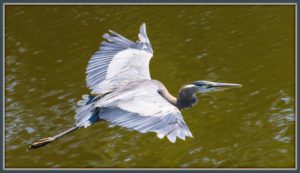
Although I do not particularly like squirrels, they can make appealing subjects, especially when six of them (or is it actually seven?) are in close proximity as in #9.
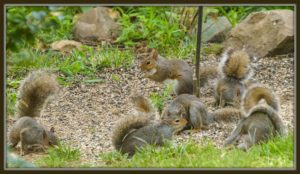
I commented earlier in this essay that butterfly numbers are gradually increasing, and #10 is my first Monarch of the year, although other people have reported seeing a few on the property.
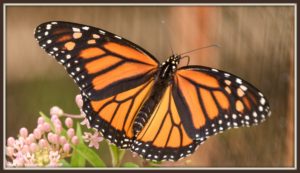
The final picture, #11, is another old favorite, a Hummingbird Moth. In this picture the sunlight is reflecting from some of the transparent “windows” in its wings.
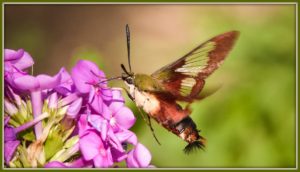
Have a great week!
